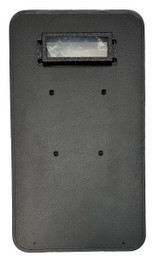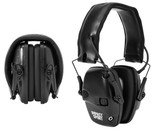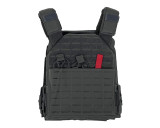Buying the Right Gas Mask: the Definitive Guide to Mask Types
Buying the Right Gas Mask: the Definitive Guide to Mask Types
Protection from smoke and hazardous gases is a part of equipment in many professions including but not limited to first responders, police officers, medics, firemen, and so on. The protective gear you need in such cases is a gas mask.
However, gas masks differ. There are multiple types of gas masks, each offering only certain level of protection. And to make things even worse for an uninformed user, there are multiple types of filters.
This guide connects the dots to bring to you all available information about tactical and medical gas masks to help you select the optimal product in each particular use case.
Types of respiratory protection
Depending on the principle of operation, gas masks are divided onto two main types, specifically: air-purifiers (APR) and atmosphere-supplying respirators (ASRs). The difference between them is evident: APRs only purify the environmental air from various contaminants, while ASRs have an independent air supply that allows a user to breathe regardless of environmental air condition.
Let’s learn more about each type.
Air-purifying masks
This type of respiratory masks protects breathing apparatus and/or eyes and face of the wearer from hazardous gases, smoke, vapors, aerosols, or particles. Their only function is to purify the environmental air, so no external source for oxygen is supplied with them. This means you cannot use air-purifying respiration systems in situations where low oxygen content or extremely dangerous atmosphere is expected.
In other words, an air purifying mask DOES protect you from smoke, mist of hazardous substances, or dust particles. It does NOT allow you to breathe when the atmosphere is low on oxygen, or underwater.
There are multiple designs and approaches to air purifiers:
- Surgical mask. This is the simplest and cheapest air-purifying mask we all got used to during recent COVID pandemic. This mask cannot protect you from anything, but it can protect other people from you spreading the virus or bacteria with micro drops of saliva. Only medical use is recommended.
- Filtering facepiece mask. This is a simple respirator that covers you mouth and nose. Depending on the type of the filter, such a mask can offer 95, 99 or 100 efficiency level in protecting your from particles, dust or mists. The filter cells are still too big to stop gases or vapors of hazardous liquids.
- Elastomeric Half Facepiece Respirator. This type of respirator covers the lower part of wearer’s face, and offers better protection against gases and vapors thanks to elastomeric materials that gas molecules cannot penetrate. The respirator is equipped with filter cartridges (you can use just one or both of them, depending on the model). Different filter types provide different level of protection. Such respirators are easy to put on, so they are preferred for emergency situations. Plus, they are reusable.
- Elastomeric Full Facepiece Respirator. This one is similar, but covers your face completely and firmly seals the face to deliver maximum protection of your breathing system and eyes from gases, fumes, vapors, and aerosols. Such tactical gas masks are a common choice among law enforcement officers. The filter cartridges automatically purify the inhaled air allowing the user to breathe for some time, typically 150 minutes to several hours. The real effective operation time depends on the contamination level and can be much shorter.
Ok, can we name the best respiratory device type? Of course, not. The choice depends on situation. Sometimes, a simple escape respirator is enough to leave a smoke-filled room in an emergency.
Atmosphere-supplying respirators
The second type of gas masks is ASR. Air-supplying respirators include a supply of fresh air (or oxygen) for breathing, while mask protects the face of a wearer and prevents inhaling of hazardous environmental atmosphere by the user.
Needless to say, such respirators can protect from all types of hazards including vapors, gases, particles, aerosols, mists, and fine dusts. Moreover, and this is the main ASR’s advantage – they allow a user to breathe even in low oxygen conditions.
There are multiple atmosphere supplying gas masks available on the market:
- Supplied-air respirators. Take a usual facepiece gas mask and attach an air supply to it. Now you have a supplied-air respirator. Such design is ideal when you need to work for long hours in a contaminated area, where there are no particular dangers to health, but regularly replacing filters is too inconvenient.
- Self-contained breathing apparatus. Simple air-purifying respirators cannot be used in environments that are immediately dangerous to life and health (IDLH). The SCBA on the other hand perfectly fits the job. Put this on, and safely work in IDLH environments for hours.There are two sub-types of SCBA:
- Open-circuit SCBA. The device carries air supply, the user inhales the clean breathing air, and then exhales the expiratory air outside through the exhaust. This type of device requires carrying an air tank with you, typically on your back. The tank must be replaced when the supply depletes.
- Closed-circuit SCBA. This type of breathing apparatus creates a closed loop where the inhaled air is filtered, recycled, and returned back to the breathing circuit. A closed-circuit SCBA is a great escape device when one needs to be evacuated from IDLH environments. The air supply is limited, so the overall weight of the apparatus is lower.
Open-circuit SCBAs are recommended for escape operation to evacuate civilians from air contaminated areas thanks to continuous flow of clean air, which means even unconscious people can safely breathe. For entry operations, open-circuit SCBAs must be the demand type, to allow the wearer to receive adequate amounts of air with each inhaling.
Closed-circuit SCBA is used in mining or closed areas with low oxygen as both entry and escape apparatus. One common name for this type of SCBA is self-contained self-rescuer (SCSR).
Filter types
Let’s talk about filters now, because filters are the core of air-purifying respirators, and without filters they are dead (and may be you too, which is worse).
NIOSH respirator filter classes
As you remember, face masks do NOT protect you from gases or vapors. But they do protect you from particles or dust, paint, or other substances. However, the level of this protection depends on the filter class of the . The NIOSH standardizes three filter classes:
- N series. “N” stands for “no oil protection”. There three categories of filters in the N-series labeled N95, N99, N100 each filtering accordingly 95%, 99%, and 99.97% of particles.
- R series. “R” is for resistant to oil. Such respiratory filters can filter some oil micro drops, like fuel, paint or synthetic lubricants. There are also three categories here: R95, R99, R100.
- P series. These filters are strongly resistant to oil, or oil-proof. Again, these filters too have three categories in terms of particle filtering capabilities: P95, P99, P100.
NISOH approved masks can guarantee the claimed level of protection, so pay attention to the corresponding marks when you purchase a face mask.
P100 filter classes provide the maximum level of protection against particles of toxic materials or oil aerosols. They are guaranteed to protect against asbestos dust, viruses, ceramic particles, and bacteria.
Gas filter classes
Gas filters are designed to protect from gaseous or vaporized toxic or hazardous substances. Gas filters use combination of certain materials to chemically bound toxic gases inside the filter and therefore prevent inhaling them by the user.
The following classes are standard. Note that aside from the letter and the category of protection ranging from 1 to 3, each filter class is also color-coded, so you can easily see what class of the filter you buy.
| Gas class | Color code | Application | Standard |
| A | Brown | Organic gases and vapors (solvents) with boiling points above 65°C such as white spirit, styrene or xylene. | Regulated by the EN405 and EN14387 standards. |
| AX | Brown | Gases and vapors of organic compounds with a boiling point below 65°C such as methanol, chloroform or perchloroethylene. | Regulated by the EN14387 standard. |
| B | Grey | Inorganic gases and vapors such as chlorine, hydrogen sulphide. Does not protect from CO. | Regulated by the EN14387 standard. |
| CO | Black | Carbon monoxide | DIN 3181* |
| E | Yellow | Acid gases and vapors like sulfur dioxide | EN14387 |
| Hg | Red | Mercury vapors | EN141 |
| I | Orange | Radioactive iodine | DIN 3181* |
| K | Green | Ammonia and organic derivatives | EN14387 |
| NOx | Blue | Nitric oxide, nitrogen oxide, nitrous vapor | EN141 |
Categories in each gas filter class are:
Level 1 – filters up to 1000 parts per million (PPM)
Level 2 – filters up to 5,000 PPM
Level 3 – filters up to 10,000 PPM
For example, let’s take this label: A3B3E2K2P3. Such filter offers superior protection from organic gases and vapors with boiling point above 65°C and from inorganic gases as well. It also protects from acid gases, but the amount of protection is limited to 5000 PPM. Finally, the filter protects from organic derivatives, and offers 99.97% of protection from particles.
Conclusion
Finding the best gas mask is not a game of chance, but an informed decision. We recommend carefully reading all the applying standards and understanding how each respiratory protection system works. You really need to understand the limits of applicability of each device type.
Then, select a specific model based щит your goals and preferences. Do you intend to face smoke only, or toxic gases too? Will you need the ability to speak when the mask is put on? Will you fire?
If you are not sure what to prefer, you can always ask BattleSteel®️ consultants to help you with your choice. Our experts have tested each model and can suggest the optimal variant for you.
Recent Posts
-
Understanding Ballistic Shield Ratings and Their Applications
The Trusted Name in Tactical Defense - BattleSteel® When it comes to protecting those who protect us …2025-04-19 -
The Importance of Hearing Protection in Tactical Environments
The Legacy of BattleSteel® BattleSteel® is a trusted name in the world of tactical defense equipment …2025-04-14 -
How to Properly Fit and Wear a Plate Carrier
About BattleSteel and Their Mission BattleSteel is a trusted name in the tactical gear industry, ren …2025-04-11


